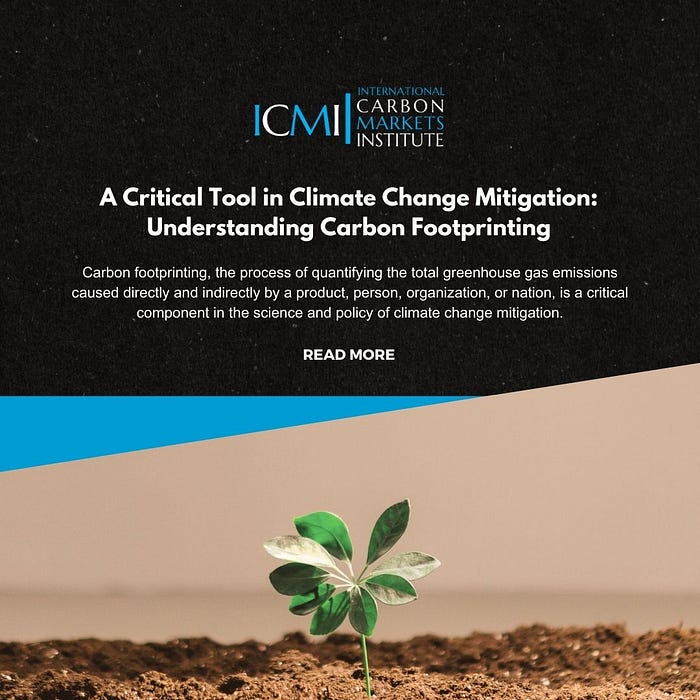A Critical Tool in Climate Change Mitigation: Understanding Carbon Footprinting by International Carbon Markets Institute
by International Carbon Markets Institute

Carbon footprinting, the process of quantifying the total greenhouse gas emissions caused directly and indirectly by a product, person, organization, or nation, is a critical component in the science and policy of climate change mitigation. Discerning its dimensions, applications, and potential pitfalls can pave the way for more informed decisions and strategies in combating climate change.
Carbon footprinting as a concept is rooted in the principles of life cycle assessment (LCA), an approach that examines the environmental impacts associated with all stages of a product’s life, from raw material extraction to end-of-life disposal. By applying this approach to the domain of greenhouse gases, carbon footprinting offers a comprehensive view of the emissions associated with any activity or entity.
The granularity and scope of a carbon footprint can vary depending on the goal of the assessment. It can encompass the emissions from a single activity or process, such as manufacturing a product or running an office building. Alternatively, it can span the entire supply chain of a product, capturing both direct and indirect emissions. On a larger scale, it can cover the emissions of a whole organization, city, or nation.
While carbon dioxide is often the main focus due to its prevalence and longevity in the atmosphere, a thorough carbon footprint includes all relevant greenhouse gases, such as methane and nitrous oxide. These gases are converted to carbon dioxide equivalents (CO2e) based on their global warming potential, enabling their aggregation into a single metric.
Once established, a carbon footprint provides an empirical foundation for climate action. It enables benchmarking and target setting, informs emissions reduction strategies, and facilitates tracking and reporting progress. It can also guide policy development, investment decisions, and consumer choices, among other applications.
However, the process of developing a carbon footprint is not without challenges. Data collection can be resource-intensive and fraught with uncertainties, especially when it comes to indirect emissions and upstream or downstream stages of the supply chain. Methodological choices, such as system boundaries, allocation rules, and emission factors, can also significantly influence the outcome.
Interpreting and comparing carbon footprints can be equally challenging. A lower carbon footprint does not always equate to a lower overall environmental impact, given the potential trade-offs with other impacts such as water use, land use, toxicity, and biodiversity loss. The context and purpose of the footprint, such as the type of product, the sector, and the geographical location, also need to be taken into account.
Moreover, the effectiveness of carbon footprinting as a tool for climate change mitigation hinges on the transparency, credibility, and relevance of the process. This calls for adherence to recognized standards and protocols, rigorous verification, and meaningful stakeholder engagement. It also calls for continual updates to reflect technological advancements, scientific insights, and evolving societal values.
In tandem with the quantification of carbon footprints, the actual reduction of emissions necessitates concerted efforts at multiple levels. Technological innovations, operational efficiencies, and renewable energy transitions are among the avenues for reduction. Additionally, shifts in consumption patterns, product design, and business models can contribute to a lower carbon intensity.
Lastly, carbon footprinting should be integrated with broader frameworks of sustainability and climate resilience. It should not only serve as an instrument for measuring emissions but also as a catalyst for transformative change towards a low-carbon and sustainable future. As the world grapples with the escalating threat of climate change, understanding and effectively utilizing carbon footprinting is more critical than ever.
Read more at International Carbon Markets Institute.
Comments
Post a Comment